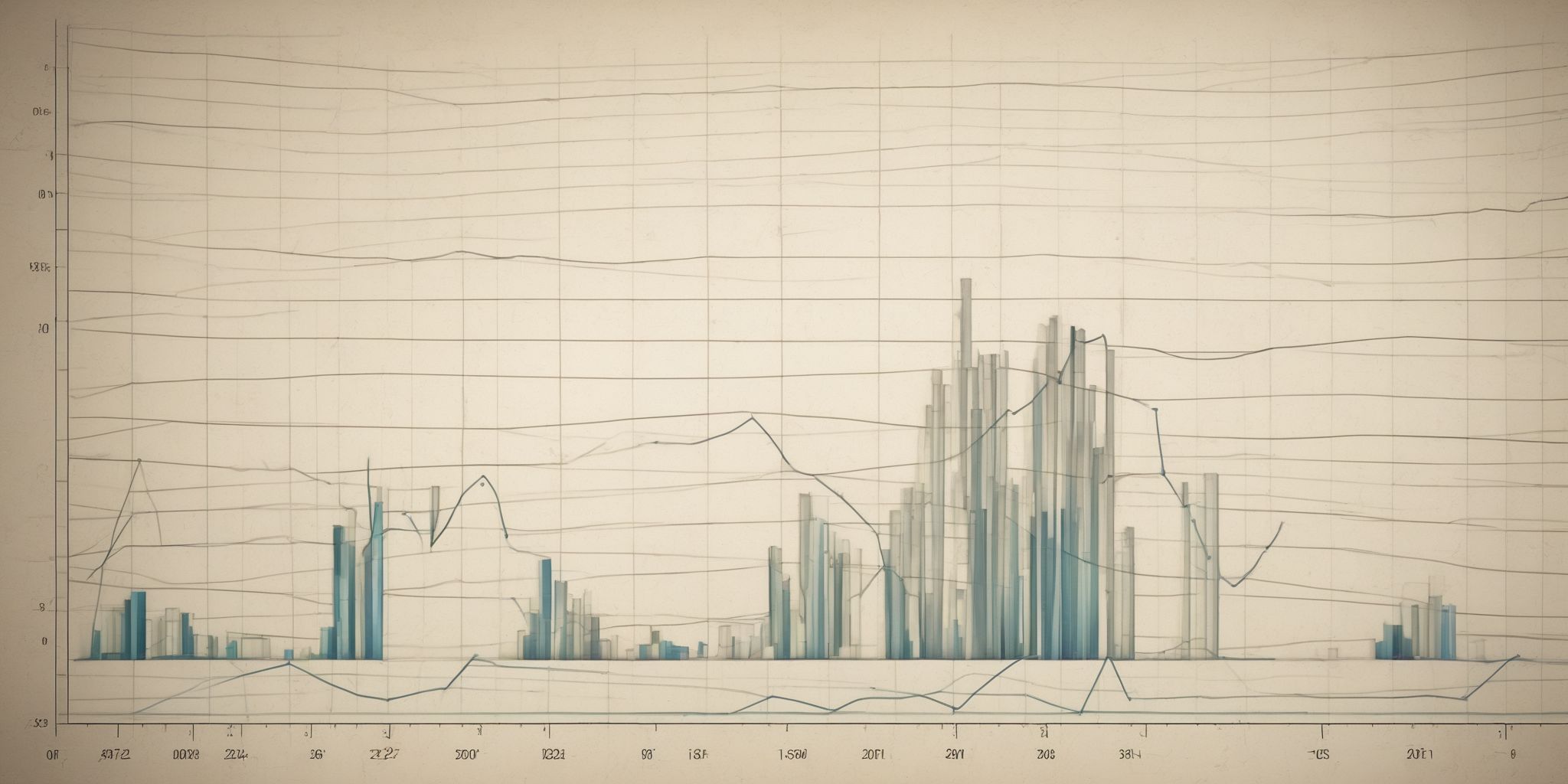Explained: Using financial calculators to assess bond investments
Are you ready to demystify the world of bond investments? Well, put on your financial superhero cape, because we're about to dive headfirst into the realm of financial calculators and their role in assessing bond investments. Whether you're a seasoned investor or just beginning to explore the exciting world of bonds, these handy digital tools can be your trusty sidekick in making informed and profitable investment decisions.
So, buckle up and get ready to uncover the secrets behind using financial calculators to unlock the potential of bonding with your money.
Benefits of Using Financial Calculators for Assessing Bond Investments
Accurate and Quick Valuation
Financial calculators play a vital role in accurately and quickly valuing bond investments. These calculators utilize various formulas to determine bond prices and yields. By inputting key parameters such as coupon rate, face value, and maturity date, investors can obtain immediate valuations.
For example, a calculator can quickly calculate the present value of future coupon payments and the bond's final payment. This enables investors to compare different bonds and make informed investment decisions based on their specific financial goals. Whether assessing corporate bonds or government bonds, financial calculators offer a practical solution to evaluate bond investments efficiently and with greater accuracy.
Utilizing Yield and Price Calculators
Yield and price calculators play a crucial role in assessing bond investments. These calculators provide accurate and quick valuations, helping investors make informed decisions. By inputting variables such as coupon rate, face value, and market yield, investors can determine the price, yield-to-maturity, and potential returns of a bond. For example, if an investor wants to compare the yields of two bonds with different coupon rates, the calculator can quickly provide the necessary data for analysis. By understanding the relationship between yield and price, investors can identify attractive investment opportunities and optimize their bond portfolio.
Valuing Bonds with Coupon Payments
- Financial calculators help accurately determine the value of bonds that offer regular coupon payments.
- These calculators consider the bond's face value, coupon rate, and time remaining until maturity to calculate the present value of future cash flows.
- By inputting these variables into the calculator, investors can quickly assess the fair price of a bond in the market.
- For example, if a bond has a face value of $1,000, a coupon rate of 5%, and matures in 5 years, the calculator can determine its present value based on prevailing market interest rates.
- This information enables investors to compare the bond's market price to its intrinsic value, helping inform buying or selling decisions.
Risk Assessment and Comparison
When it comes to assessing bond investments, risk analysis and comparison are crucial. Financial calculators equipped with risk assessment features provide investors with valuable insights. These tools allow users to measure bond volatility and determine metrics like convexity and duration. By analyzing these risk indicators, investors can make informed decisions.
For example, comparing the volatility of different bonds helps in identifying investments with lower risk.
Additionally, calculating duration assists in evaluating how interest rate changes can impact the bond's price. With the help of financial calculators, investors can effectively assess and compare the risk profiles of various bond investments.
Measuring Bond Volatility
Measuring bond volatility is a crucial aspect of assessing bond investments. It helps investors understand the potential price fluctuations and risk associated with a particular bond. Financial calculators provide useful tools for calculating bond volatility using metrics like duration and convexity. By determining how sensitive a bond's price is to changes in interest rates, investors can make informed decisions about their risk tolerance.
For example, a bond with higher duration will be more sensitive to interest rate changes than one with a lower duration. This information allows investors to select bonds that align with their risk preferences and investment goals.
Determining Bond Convexity and Duration
Determining bond convexity and duration is an important aspect of bond investment analysis. Convexity measures the sensitivity of a bond's price to changes in interest rates, providing insights on potential price changes. Duration, on the other hand, calculates the weighted average time it takes to receive the bond's cash flows, helping investors assess interest rate risk.
Calculating convexity and duration using financial calculators allows investors to make informed decisions regarding bond investments.
For example, understanding the convexity and duration of different bonds can help investors select bonds with lower interest rate risk or compare the impact of various interest rate scenarios.
Income Projections and Yield-to-Maturity Analysis
Analyzing income projections and assessing the yield-to-maturity (YTM) of bonds are vital in making informed investment decisions. Income projections provide an estimate of the potential returns from a bond, considering both coupon payments and any capital gains or losses upon maturity. YTM, on the other hand, helps investors determine the annualized return they can expect if the bond is held until maturity. By using financial calculators specialized for bond investments, investors can input the bond's coupon rate, face value, and time to maturity to calculate these figures accurately. This insight enables investors to compare different bond options and make informed decisions based on potential returns.
Calculating Potential Returns
Calculating potential returns is a vital aspect when evaluating bond investments. Using financial calculators bonds, you can determine the expected profitability of a bond before investing. To calculate potential returns, input the bond's purchase price, coupon rate, and maturity date. The calculator will then provide the yield-to-maturity value, representing the annualized return if held until maturity. By comparing YTMs of different bonds, investors can make informed choices.
For instance, a bond with a higher YTM may offer better returns. This allows investors to assess potential gains and adjust their investment strategies accordingly.
Understanding Yield-to-Maturity
Yield-to-maturity is a fundamental concept for bond investors. It represents the total return an investor can expect to receive if they hold the bond until maturity. YTM takes into account the bond's current price, coupon payments, and the time remaining until maturity.
By using a financial calculator, investors can calculate the YTM of a bond quickly and accurately. This allows them to compare different bonds and determine which ones offer the best potential return.
For example, suppose you are considering two bonds with different coupon rates and maturities. By calculating the YTM for each bond, you can assess which investment opportunity provides a higher yield relative to its risk.
Finding the Best Bond Investment
When it comes to finding the best bond investment, financial calculators can be invaluable tools. These calculators allow investors to compare yields and coupon rates of different bonds, helping them identify the most attractive options.
Additionally, they provide insights into credit ratings and bond quality, enabling investors to gauge the risk associated with potential investments. Liquidity and marketability analysis can also be performed using these calculators, helping investors ensure they can easily sell their bonds when needed. By leveraging the features of financial calculators, investors can make informed decisions and maximize their returns in the bond market.
Comparing Yields and Coupon Rates
When evaluating bond investments, comparing yields and coupon rates is crucial in determining the potential returns. The yield represents the annualized return, taking into account the bond's current price and interest payments. Comparing yields allows investors to evaluate the relative profitability of different bonds. Meanwhile, coupon rates indicate the annual interest payments as a percentage of the bond's face value.
By comparing coupon rates, investors can assess the fixed income they will receive.
For example, a bond with a higher coupon rate may offer more consistent cash flow compared to one with a lower rate. This analysis helps investors make informed decisions based on their income needs and risk tolerance.
Analyzing Credit Ratings and Bond Quality
- Credit ratings provide valuable insight into the financial stability and risk associated with a bond. Utilizing financial calculators can help assess the creditworthiness of a bond investment.
- Look for bonds with a high credit rating issued by reputable rating agencies, as these are considered safer investments.
- Lower-rated bonds may offer higher yields but come with increased risk. Use financial calculators to evaluate the risk-reward tradeoff and make informed decisions.
- Consider factors such as the issuer's financial health, industry trends, and economic conditions when assessing bond quality.
- By analyzing credit ratings and bond quality through financial calculators, investors can make more informed choices and manage their risk effectively.
Evaluating Liquidity and Marketability
Evaluating liquidity and marketability is important when assessing bond investments. Liquidity refers to the ease of buying or selling a bond without significant price changes. A liquid bond can be quickly converted to cash, which is desirable for investors needing flexibility. Marketability, on the other hand, signifies the availability of buyers and sellers in the market. Bonds issued by reputable entities usually have higher marketability.
By evaluating these factors, investors can determinethe ease of entering or exiting a bond investment.
For example, highly liquid government bonds are often considered safer investments due to their wide availability and ease of trading.
Key Features and Handling Financial Calculators for Bond Investments
Understanding Required Inputs
To accurately assess bond investments using financial calculators, certain inputs must be understood. These inputs include the bond's coupon rate, face value, and maturity date. The coupon rate represents the annual interest payment, while the face value indicates the bond's principal amount. The maturity date denotes the bond's expiration date.
Additionally, the market yield and price should be considered. By inputting these values correctly, investors can obtain accurate valuations, yield-to-maturity calculations, and income projections. For instance, if an investor wishes to compare two bonds with different coupon rates, understanding the importance of inputting the correct coupon rate into the calculator is crucial.
Coupon Rate, Face Value, and Maturity Date
When using financial calculators for bond investments, it is important to understand the key inputs required: the coupon rate, face value, and maturity date. The coupon rate represents the annual interest rate paid by the bond issuer. The face value indicates the amount the bond will be worth at maturity. The maturity date is when the bond expires and the issuer repays the principal amount to the bondholder.
For example, let's say you have a bond with a $1,000 face value, a 5% coupon rate, and a maturity date of 10 years. By inputting these values into a financial calculator, you can assess the bond's present value, yield, and potential returns. Having a clear understanding of these inputs is crucial in accurately evaluating bond investments using financial calculators.
Market Yield and Price
Market Yield and Price in Financial Calculators Bonds:
- Market yield represents the annual return an investor could expect to earn by purchasing a bond at its current market price. Calculating market yield helps assess the investment's attractiveness compared to other available options.
- Financial calculators enable users to input bond details such as coupon rate, face value, and market price to determine the market yield accurately.
- Understanding the relationship between market yield and price is crucial for bond investors. As market yield rises, bond prices typically decrease. Conversely, when market yield falls, bond prices tend to rise.
- By using financial calculators to analyze market yield and price, investors can evaluate the impact of changing market conditions on their bond investments and make informed decisions accordingly.
- Adjusting market yield assumptions in financial calculators allows investors to analyze different scenarios and assess the sensitivity of their bond investments to market changes.
Using Advanced Functions
Using Advanced Functions (Financial calculators bonds):
- Modifying Assumptions and Variables: Advanced financial calculators allow investors to adjust various assumptions, such as interest rates or future cash flows, to assess the impact on bond valuations. This flexibility enables users to evaluate different scenarios and make informed investment decisions.
- Creating Sensitivity Analysis: Financial calculators with advanced functions enable investors to perform sensitivity analysis by changing one variable at a time and observing its effect on bond prices or yields. This helps in understanding the sensitivity of bond valuations to different market conditions.
- Exploring What-If Scenarios: With advanced financial calculators, investors can model different "what-if" scenarios to evaluate the potential outcomes of specific events or changes in market conditions. For example, they can analyze the impact of interest rate changes on bond prices or simulate the effects of early bond redemption.
- Comparing Different Investment Opportunities: Advanced financial calculators can also assist in comparing the potential returns and risks of different bond investments. By inputting the relevant data for each bond, investors can assess which option may provide them with the most favorable risk-reward tradeoff.
- Conducting Portfolio Optimization: Some financial calculators offer portfolio optimization tools that allow investors to determine the ideal weightings for different bonds within their investment portfolio. These advanced functions help in achieving a balanced and diversified bond portfolio aligned with the investor's financial goals and risk tolerance.
Modifying Assumptions and Variables
Modifying assumptions and variables allows investors to customize their analysis and explore different scenarios using financial calculators bonds. By adjusting factors such as interest rates, time to maturity, or credit ratings, investors can assess the impact on bond valuations and potential returns.
For example, modifying the assumed yield can show how changes in market conditions affect the bond's price.
Additionally, adjusting the time to maturity can help determine the sensitivity of a bond's value to changes in interest rates. This flexibility enables investors to make more informed decisions and adapt their strategies based on different market conditions or investment goals.
Creating Sensitivity Analysis
Sensitivity analysis is a valuable tool offered by financial calculators for bond investors. It allows users to assess the impact of changes in certain variables on the outcome of their investments. By altering factors like interest rates, yields, or bond prices, investors can understand the sensitivity of their portfolio to these changes. This analysis helps in making informed decisions and managing risk effectively.
For example, if a slight increase in interest rates significantly affects the bond's value, it indicates higher price volatility. Armed with this insight, investors can adjust their investment strategy accordingly, ensuring their portfolio aligns with their risk tolerance and investment goals.
Exploring Different Types of Financial Calculators
When exploring different types of financial calculators for bond investments, there are several options available. Online bond calculators offer convenience and accessibility, allowing investors to input bond details and receive instant valuations, yield-to-maturity analysis, and income projections. Excel and spreadsheet tools provide customization and flexibility, enabling investors to create their own calculators with additional functions.
Dedicated bond calculator devices offer specialized features and portability, which can be beneficial for frequent bond investors on the go. Investors should weigh the pros and cons of each option and choose the calculator that best aligns with their needs and preferences.
Online Bond Calculators
Online bond calculators provide a convenient and user-friendly way to assess bond investments. These calculators allow investors to quickly determine the value of a bond, calculate yields, and estimate potential returns. With just a few inputs such as coupon rate, maturity date, and market price, investors can access crucial information to make informed investment decisions.
Online bond calculators often offer additional features like displaying yield curves, comparing different bonds, and performing sensitivity analysis. This empowers investors to analyze multiple investment scenarios and understand the impact of changing variables. By utilizing online bond calculators, investors can save time and gain valuable insights into their bond investment strategies.
Excel and Spreadsheet Tools
Excel and other spreadsheet tools are commonly used for assessing bond investments. These tools offer flexibility and customization options, allowing investors to create their own financial models and perform various calculations. By inputting relevant data such as bond prices, coupon rates, and maturity dates, investors can easily analyze factors like yield-to-maturity, present value, and future cash flows.
Spreadsheet formulas can also be utilized to automate calculations and generate visual representations of bond performance. Moreover, these tools provide the advantage of being widely accessible and familiar to many investors, making them a popular choice for bond analysis and decision-making.
Dedicated Bond Calculator Devices
Dedicated bond calculator devices offer a portable and specialized solution for bond investors. These devices are specifically designed to perform complex bond calculations accurately and efficiently. With dedicated calculators, investors can easily input variables such as coupon rates, market yields, and bond maturity dates to calculate important metrics like yield-to-maturity and present value.
These devices often provide additional features such as cash flow analysis, bond analytics, and theability to store and recall multiple bond calculations. By using dedicated bond calculator devices, investors can streamline their bond investment analysis and make informed decisions on the go.
Final thoughts
Financial calculators are useful tools for assessing bond investments. These calculators allow investors to evaluate and compare different bonds based on various financial metrics such as yield, duration, and present value. They simplify complex calculations and offer valuable insights into the potential profitability and risk associated with bond investments.
By inputting key information such as coupon rate, maturity date, and market interest rate, investors can determine the fair value of a bond, its rate of return, and make informed decisions accordingly. With the ability to analyze numerous bonds simultaneously, financial calculators provide investors with a streamlined approach to assess and monitor their bond investments.


